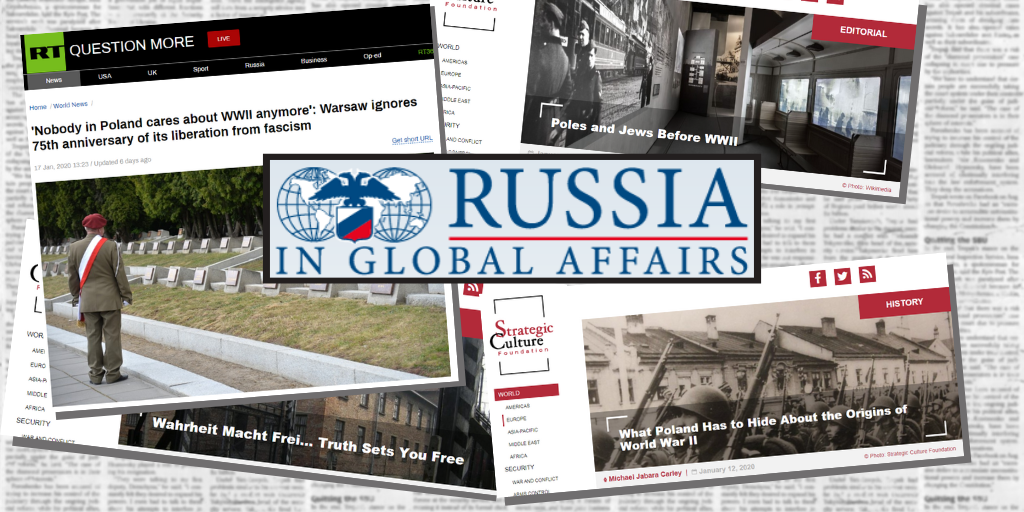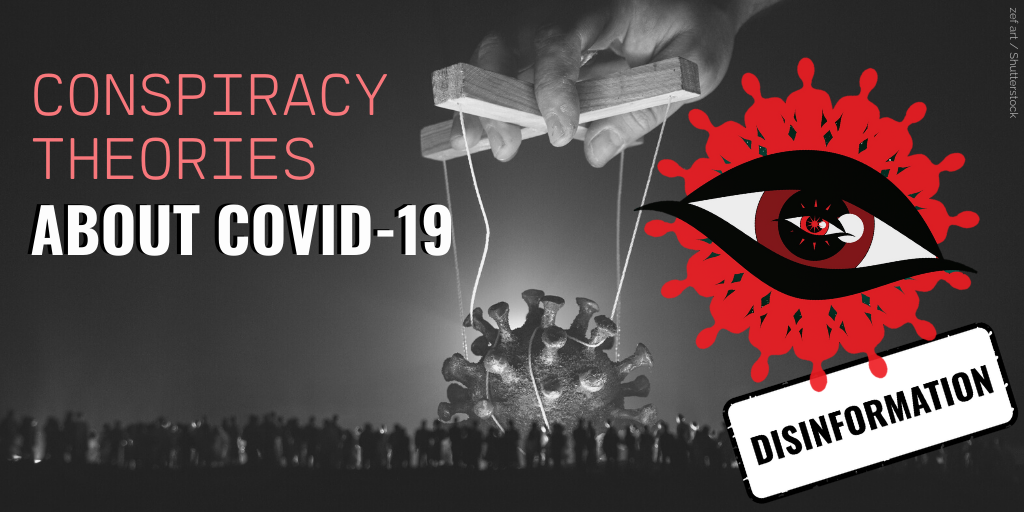Info OPS Polska Foundation was established for the implementation of projects aimed at ensuring the safety of the information environment. In its latest report, excerpts from which we publish below, the foundation analyzes Russian infosphere-based information and psychological operations targeting relations between Poland and Ukraine.
The most popular examples, in terms of the scope of the operation of discrediting mutual Polish-Ukrainian relations, are coming directly from the Russian propaganda center Sputnik which is one of the main information objects implementing Russian manipulation activities into the Polish information environment. Yet, the methodology described below is also used against other European nations, disinformation is conducted in dozens of languages, mostly against Ukraine, the United States, the European Union.
One of the main objectives of Russian disinformation is to evoke the conviction that „Ukraine is a failed state, plunged into economic crisis and corruption”, that „Ukrainians threaten its neighbors” and that Kyiv lacks decision-making power and the authorities are powerless.
The fact that Russia and its supporters are playing out the issue of the Polish-Ukrainian conflict of remembrance, focused on the issue of the Volhynia massacre, is a model example of the implementation of the „divide and rule” method.
However, it is important to note that Russian propaganda uses not only an artificial, chauvinistic and falsified image, but also facts are used for the purposes of their campaigns – to mix the messaging and make it harder for the human cognitive space to differentiate truth from falsehood.

The main focus of Russia’s media in Poland
In order to ensure operational continuity, the Russian side systematically produces a certain number of manipulative materials, disinformation, and propaganda, which it then implements into the Polish-speaking information environment. Measurement of communication dynamics highlights the main informational objectives of Russian operations.
Here is the list of 7 main thematic areas discussed by Russian media outlets in Poland since the first day of its operation till 25 May 2019 – on Sputnik website. Apart from shaping propaganda materials on Russia, negative communication about the USA, Poland, NATO, the third place in terms of the number of messages is taken by Ukraine. It confirms that Ukraine is one of the main vectors of the impact of Russian propaganda in Poland.

There are no significant changes in the objectives of the Kremlin’s activities in Poland:
- 38% – Presenting a negative image of the foreign policy of the United States and NATO countries.
- 32% – Creating a falsely positive image of relations between Poland and the Russian Federation.
- 23% – Depreciation of Poland’s defense capabilities.
- 23% – Shaping a negative image of Ukraine in the context of relations with Poland.
- 22% – Shaping a negative image of the European Union.
- 18% – Shaping a negative image of the actions taken by the European Union Member States in their relations with the Russian Federation.
- 17% – Disavowing the Polish statehood, shaping a negative image of Poland.
- 17% – Building a negative image of immigration and refugees.
Such a model of propaganda activities is aimed at permanent creation of cognitive conditions in the information environment, which will have a permanent negative impact, particularly on the perception of mutual relations between Poland and Ukraine by the societies of both countries.
Topics promoted by Russian media in Poland in the context of Ukraine
There is a variety of topics promoted in the context of Ukraine: manipulative materials concerning the situation in occupied Donbas, Crimea, or the promotion of the so-called „self-proclaimed republics,” Donetsk and Luhansk; a number of destabilizing operations using themes sensitive to both Poland and Ukraine. In particular, the messaging contains materials devoted to the Volhynia tragedy, the promotion of Ukraine as a country "possessed by fascism and the cult of [WW2 time nationalist] Stepan Bandera,” as the promotion of all negative information, which are supposed to influence the perception of Ukraine by Poles.
 Examples of Russian manipulative messaging
Examples of Russian manipulative messaging
In order to illustrate some of these actions, one can quote some simple, false and permanent narratives which systematically appear in the Russian Sputnik:
1. Ukrainians and Ukraine as an unfriendly country to Poland, having territorial claims and constituting a military threat to Poland
The first example is disinformation about an alleged flood of Poland with weapons from Ukraine and an attempt to build underground armed organizations. This false information message is intended to create the false impression that Ukraine is a military threat to Poland. The propaganda materials contain elements of a conspiracy theory suggesting that Ukrainians are preparing for an armed uprising on Polish territory, or similar, saying that they are an element of hybrid actions, potential in terms of military action.
These messages are usually combined with many others, such as promoting disinformation about Ukraine’s territorial claims against Poland and vice versa.

2. Ukraine as a fascist state, Ukrainian nationalism as a threat to Poland
“Ukraine as a country possessed by fascism and the cult of Bandera.” A fake message that has been realized constantly since the moment of the launch of the Polish-language Sputnik. Russian propaganda promotes the theses about the fascism that dominates Ukraine, promotes all negative media reports related to the speeches of Ukrainian nationalists and duplicates disinformation shaping the image of Ukraine and Ukrainian society by imposing the image of fascism, flag and nationalism through propaganda messages. Negative aspects of relations between Poland and Ukraine in the historical context are also emphasize, to support mutual hostility.

3. Ukraine and Ukrainian immigrants as an economic risk for Poland.
Another example is creating a picture of the risk of immigration from Ukraine due to the epidemiological threat.
Russian Sputnik is also promoting the thesis that the influx of emigrants from Ukraine to Poland causes unemployment and reduces the standard of living of Poles. To justify these manipulative theses, propagandists invoke narratives concerning unemployment among Poles, the reduction of Poles earnings by Ukrainians due to performing work for a lower salary than Poles, and many similar. One of them is promoting all negative media reports and falsifying media reports on negative events related to Ukrainian citizens in Poland and Ukraine, e.g. reports of crimes, fights and similar incidents.
4. Ukraine as a failed state
Building a negative image of the Ukrainian authorities is among the priorities of Russian propagandists. Such messages shape the impression that the Ukrainian state is unstable, incapable of self-determination, permeated with corruption and Ukrainian politicians are presented as incompetent, unable to function in the reality of international politics and pursuing only their own particular interests. One of the elements of such articles is also the use of sarcasm and humor through publications and the reproduction of mocking drawings such as the one depicting the outgoing President Petro Poroshenko who is „fleeing Ukraine to take up a lucrative position in the structures of the European Union.”

The use of negative wording
One of the elements of Russian psychological operations is a visible attempt to create and popularize words that have a permanent negative impact on Ukraine’s image. Such an element is called a rhetorical incident.
One of these words is “Upaina”, which is a combination of the words Ukraine and UPA, which is an abbreviation of the Ukrainian insurgent army. This word was intended to attribute the image of Ukraine as a nationalist state to one unique word which was promoted in the Polish language network. Yet, it did not become very popular.
The situation is different with the second word: „Banderowcy” which was created from the name of Stepan Bandera. The idea was to create a unique word negatively depicting Ukraine in the eyes of Poles. The statistical chart shows that this word can be considered as at least partially successful – the range and popularity of this tag/word have been steadily increasing since 2014.

Causing incidents and provocations
Another element of manipulating and disrupting Polish-Ukrainian relations are physical incidents and provocations, aimed at fuelling xenophobia, local hatred, which are then promoted in the media by Russian propaganda to disrupt the mutual relations between Poland and Ukraine.
The examples include the shooting from the grenade launcher of the Polish consulate in Lutsk. The perpetrators of the attack were arrested by the Ukrainian justice system and are said to be involved in many similar provocations, such as the devastation of the synagogue in Chernivtsi and the grenade attack on the US Embassy. One can assume the thesis that the group’s activity was deliberately aimed at taking criminal action in order to destabilize relations between Ukraine and its allies, including Poland.

Apart from the attack on the consulate in Lutsk, there were also other incidents and provocations of various nature: the devastation of the monument of the Poles murdered in the Pieniacka Steelworks. In the Lviv region, there was also an arson of one of the classes of a Polish school.
All these events were condemned by the Ukrainian authorities, who explicitly stated that the nature of these provocations is aimed at provoking a conflict between Poland and Ukraine and Russian secret services were pointed out as the initiators.
Russian advanced model for the distribution of manipulative messages
Russians use an advanced model to distribute and replicate manipulative messages.
The first information object that operates in this model is the Sputnik website. It is used to inject manipulative messages into the Polish-language infosphere. It has a limited range as a website, but this is misleading. Messages originating from Sputnik are changed and replicated multiple times by other means.
The second stage of the model is the first multiplication of Sputnik content into a set of websites. The text of the message is not significantly changed by Russian operators. The title sometimes changes, but the lead remains similar to the content placed on Sputnik.
The next phase is the transfer of content to the blogging network. What distinguishes this process from the previous one is the fact that the contents are subject to major changes at this stage and are often referred to in the form of opinions on publications from the second stage. This phase is already used to stage the shaping the cognitive area through the creation of specially crafted information environments.
The next step in this distribution model is to use objects in social media to distribute propaganda material in various ways. The distribution method is obviously adapted to the purpose of the operation, the recipients’ vulnerability, the preferences of groups and social units in relation to which the opponent wants the disinformation operation to be effective.
The next area shaped by the opponent are the places on the web which can be qualified as areas of exchange of opinions by natural internet users. The field of opinion means in practice putting comments in the fields of publications on the pages with messages links to content created and multiplied in the two previous areas – alternative websites and the blogosphere.
The last phase of the impact is the creation of micro information areas dedicated to the impact on selected individuals or leaders of recognized groups with certain vulnerabilities/preferences. A good example of these actions are the opponent’s resources used to disrupt the relations between Poland and Ukraine based on the stirring of conflicts on the historical background.






